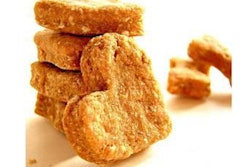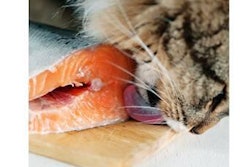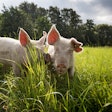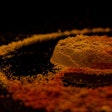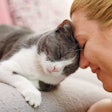This study investigated associations between gastric emptying time and post-prandial plasma glucose, insulin and lactate concentrations in cats fed an extruded dry, high-carbohydrate, moderate-fat, low-protein diet once daily by varying meal volume.
Eleven healthy, non-obese, neutered adult cats were enrolled in a prospective study and fed to maintain body weight. Ultrasound examinations were performed for up to 26 hours, and blood collections over 24 hours after eating meals containing approximately 100% and 50% of the cats’ daily caloric intake. Gastric emptying time was increased after a meal of 209 kJ/kg BW compared with 105 kJ/kg BW. Time for glucose to return to fasting was longer after the 209 kJ/kg BW meal than the 105 kJ/kg BW meal; however, peak glucose was not higher after the 209 kJ/kg BW meal compared with the 105 kJ/kg BW meal. Times for insulin to return to fasting were not significantly longer after the 209 kJ/kg BW meal than the 105 kJ/kg BW meal.
Based on results obtained, prolonged gastric emptying contributes to prolonged post-prandial hyperglycemia in cats meal fed a high-carbohydrate, low-protein, dry diet and fasting times for cats’ meal-fed diets of similar composition should be 14–26 h, depending on meal size.
Source: M. Coradini et al., 2014. Associations between meal size, gastric emptying and post-prandial plasma glucose, insulin and lactate concentrations in meal-fed cats. JAPAN online, December 2014. doi: 10.1111/jpn.12280.

